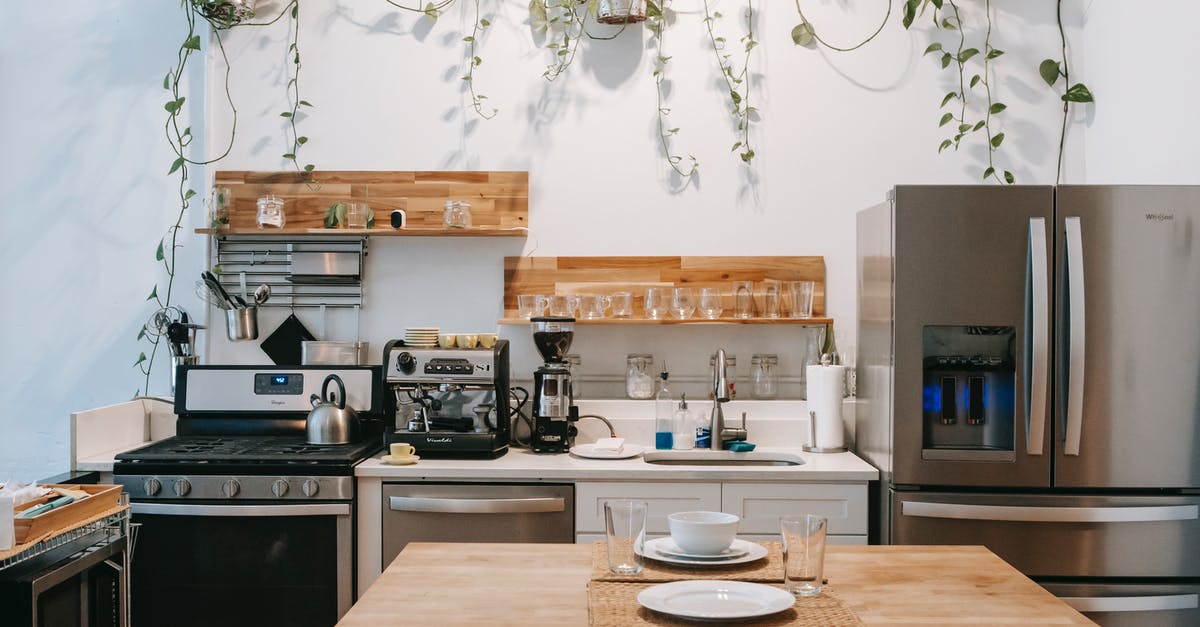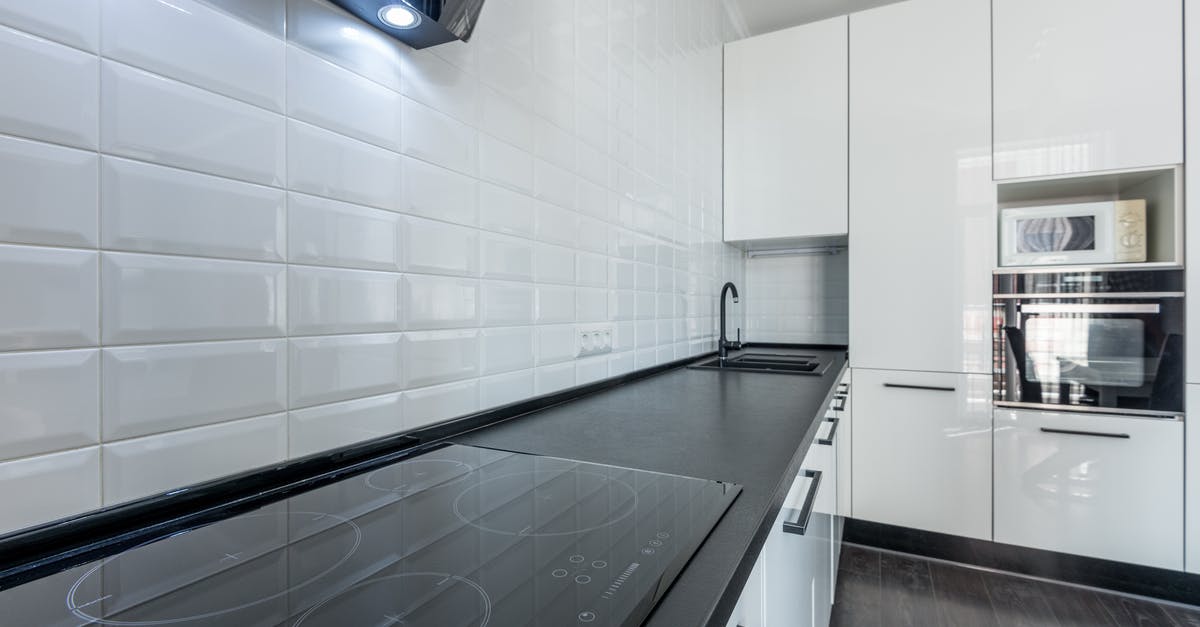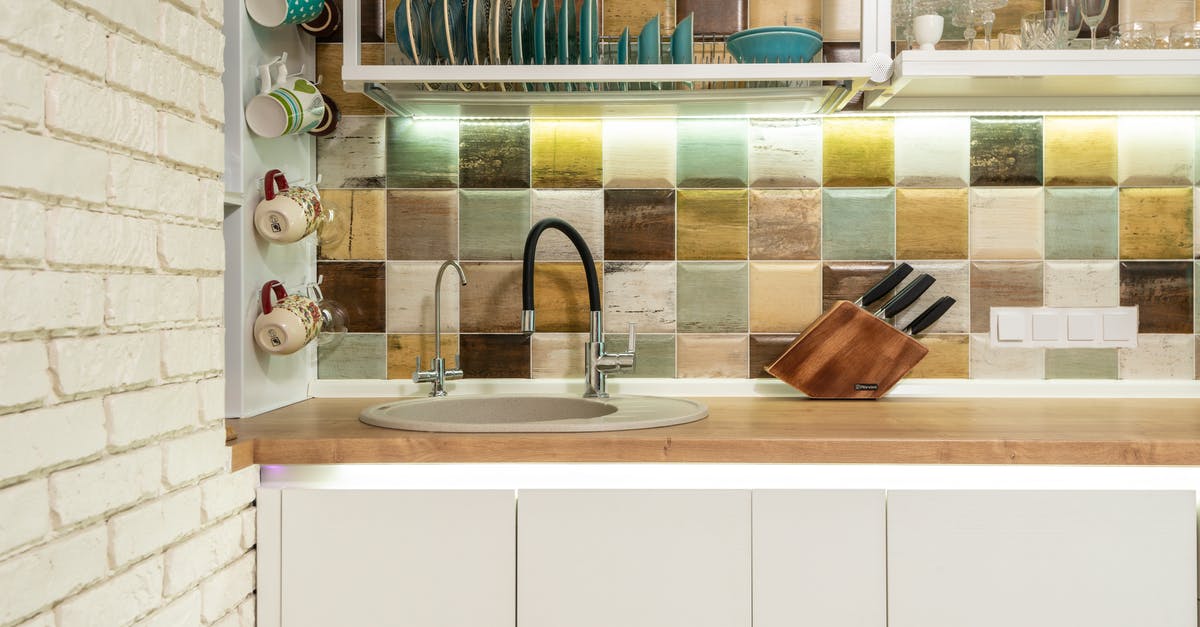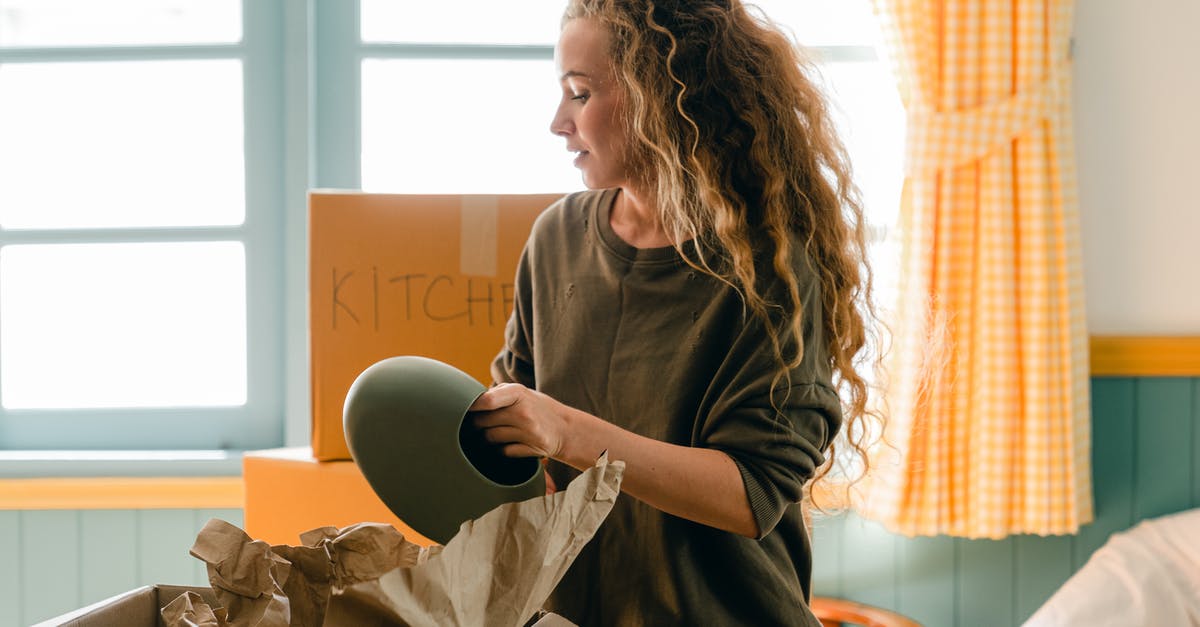Navigating the different types of cookware - new kitchen advice

I am looking to buy new cookware and I am confused by all the choices I have. I am trying to balance healthyness vs. ease of use vs. taste of prepared food vs. total cost of ownership (in that order).
My setup is 3-burner gass range, gas grill and convection oven. The cooking I do is most often stir-frying, sautéing, steaming, stewing, pan-roasting and making sauces (my wife does baking, but she is mostly happy with her gear).
So far, for the last 10 years I have been using Teflon non-stick pots and skillets and I've been fairly happy with them. My last set lasted for 6 years, but by now most of them have developed small spots of "anti-seasoning" (caramelized burnt stuff bound with the teflon), that cause everything to stick and give off-taste to food.
Initially, I was considering to buy high-grade Teflon cookware (Scanpan, Fissler or Swiss Diamond), but we got concerns about the Teflon becoming unstable at high temperature and contaminating the food (that is becoming important with a toddler in the house). As a side note, I am not sure how can I measure the temperature of a gas burner and the temperature of the pan, but I also believe it is all a matter of degree anyway (i.e. it is not safe at 259C and then suddenly becoming dangerous at 260C) - any informed opinions on that matter are welcome.
Next I was looking at aluminum pans with ceramic non-stick coating, but I can not find reliable sources of pros and cons - it still looks like a novelty and possibly immature technology. In particular I am concerned about its non-stickiness, cracking when heating without food in it (or deglazing), and risk of denting while cleaning. That, and the concern that if the ceramic coating is anything like the La Creuset enamel, I wouldn't exactly call it "non-stick".
Next I was recommended stainless-steel, which is more expensive than the other options and comes in way too many flavors - with and without core, aluminum vs. copper core, differences in thickness, etc. I am not sure what difference do these make and why are the prices varying so much (I've seen them ranging from 12,000 to 60,000 JPY).
Finally, to round it off, it would be nice if somebody is comparing all these options to include cast iron and earthenware. Any links to useful articles (not shopping reviews) would be appreciated.
Best Answer
What makes a good pan?
The main properties of a metal pan that are of interest to a cook are:
- Evenness of heat distribution. Every burner produces more heat in some spots than others. The better the pan conduct heat, the more this heat is evened out before it is conducted into the food being cooked, which is important to prevent local hotspots in the pan, and resultant burning or uneven cooking of the food. The metals that provide the best heat conduction, in descending order, are silver, copper, aluminum, and finally steel or iron.
- Heat retention This can be an advantage or a disadvantage. High heat retention is great for searing, as the pan will not immediately cool when food is placed into as much as a less retentive pan. Highly responsive pans, which change temperature quickly in response to changes in burner level or when taken off the heat are also desirable in other applications as it gives the cook more control.
- Ease of maintenance and cleaning You want a pan that is easy to clean and does not require special treatment.
- Durability Will the pan stand up to heavy use over many years?
- Chemical activity Does the interior surface of the pan interact with food chemically, changing its flavor? Active metals include aluminum and iron, especially in the presence of acid. aluminum can be rendered inactive through anodization (as is used in the famous Calphalon line).
- How much does it weigh? Many folks find very heavy cookware exceptionally inconvenient. However, weight is also related to heat retention, and more mass of metal simply provides more material to retain heat.
- Non-stick Is it easy or difficult for food to stick?
- Aesthetics Is it pretty? Or even attractive enough to put out onto a serving table? This is a personal opinion, so I will not address it further.
- Is it ferrous? If you use an induction cook top, only ferrous (iron or steel) pans will interact with the magnetic field to generate heat. The "magnet test"--does a kitchen magnet stick to the pan--will tell you if a pan is ferrous.
Metals commonly used in pots and pans
The various metals used in pots and pans have different advantages and disadvantages under these criteria:
- Stainless Steel. Very durable, moderately low conductivity of heat, very maintainable (can go in the dishwasher, for example, if you choose.)
- Carbon steel Much rarer than stainless, except perhaps in large stock pots or woks. Inexpensive, moderately low conductivity of heat, more chemically active than stainless.
- Iron. Chemically active (especially with acids), low conductivity of heat, very high heat retention (due to cast iron pans having a lot of mass of metal), heavy.
- Copper. Best conductivity of heat of typical metals used in pans, very chemically active with foods, requires maintenance as it will tarnish.
- Aluminum. Second best conductivity of heat of typical metals used in pans, chemically active in some circumstances unless anodized.
Construction Methods
Due to the different properties of these metals, in order to take advantage of their strengths, and mitigate their weaknesses, pans are made from one or a combination of metals. The most common are:
- Cast iron. Inexpensive, heavy, exceptional heat retention, requires seasoning and careful maintenance. When properly seasoned, food will not stick easily, even eggs. Can rust.
- Enamelled cast iron. Expensive, heavy, exceptional heat retention, easier maintenance. Must be handled with some care as crazing of the enamel can occur, which will reduce the non-stick properties of the lining, and is not attractive. Not chemically active with food due to lining.
- Carbon steel. Inexpensive, poor heat distribution (an advantage in woks which desire a hot spot at the centre), requires seasoning and careful maintenance. Can rust.
- Aluminum. Excellent conductivity, chemically active with acid foods. Not usually seen in the retail environment, but may be found in restaurant supply stores, especially for large stock pots or pasta boiling pots.
- Anodized Aluminum. Moderately heavy, excellent heat conductivity and retention, unique aesthetic, pricey.
- Plain stainless steel, not layered. Poor conductivity, excellent maintainability, moderate price.
- Copper (lined). Very best conductivity, cannot go in dishwasher, very expensive, unique color (some people find copper pans very attractive). If lined with tin, as is traditional, rather than steel or some other material, must be treated with care and the lining will eventually wear and have to be redone.
- Layered or "sandwich" stainless steel with an aluminum or copper disk or core. Advantages from the steel are excellent maintainability, and from the core, very good conductivity. An excellent compromise, but can be moderately expensive.
On layered pans
There are two ways the layered pans from the last bullet item are produced:
- Disk at the bottom. A disk at the bottom of the pan, which only gives good conductivity on the area the disk covers, which may not be the entire bottom.
- Entire pan is layered, up the sides. Gives better conductivity across the entire bottom of the pan, and up the sides.
This is a quality differentiator in the market. A poor pan will have a disk that doesn't cover the entire bottom, so the cooking will not be even at the edges.
A quality pan will have a disk that covers to the edge, or even entire pan construction, although for cooktop use, the most important issue is covering the entire bottom of the pan.
Finally, very large pots (stock pots, or for boiling pasta water), the layering makes very little difference, as conductivity is not the key issue--the convection of the water or stock evens out the heat. For stock pots, price is the major issue.
On Non-stick coatings (Teflon or PTFE)
Teflon (a trademark name) or PTFE (the generic name) lined pans are often available for any of the construction materials and methods outlined above. They range in levels of quality, from light cheap pans that are nearly disposable to high quality pans.
They offer the following advantages and disadvantages, in addition to the properties inherent in the base pan construction:
- Non-stick. Amazing non-stick properties. PTFE is one of the lowest friction materials known to mankind at this time.
- Care Must be handled with care, such as not abusing them with hard metal utensils which would scratch or damage the non-stick coating.
- Cannot be overheated At temperatures above about 500°F (260°C), as the PTFE break down and some of the components are volatile (will vaporize) and are toxic. PTFE coated pans are not broiler-safe for this reason. (Note that PTFE itself is non-toxic, as it reacts chemically with almost nothing, the same reason it is extremely non-stick.)
- Cleaning They are very, very easy to clean since nothing will stick to the PTFE.
- Durability The PTFE coating will eventually break down, and so the pan will lose its non-stick properties.
- Fond development The browned bits at the bottom of the pan, which in in classic French cooking are called the fond, do not develop in a PTFE coated pan, since there is nothing for the fond to stick to. This may be an advantage or disadvantage.
Lids and Handles
The material the lid (if there is one), and handles is made from or covered with is also important.
It is highly desirable that the pot or pan be able to be used on the cooktop, in the oven, and even under the broiler (grill, I believe the British would say).
Non-metal materials that are not oven/broiler safe are a disadvantage. Plastic is especially problematic. Note that some hard phenolic type plastic materials can go into a moderate (up to about 450°F (230°C)) oven; read the manuals, but I recommend true metal handles.
Earthenware
Earthenware cookware, such as a tagine, is a speciality item that is good for cooking braises, rice and couscous type dishes, and other slow cooking dishes. It is not a good general purpose item, as it cannot be used for high temperature frying, sautéing, and so on. They are generally used in the oven, although some small number of them are safe on top of the cook top.
Conclusion
Different pan constructions are ideal for different applications.
A typical cook will want an assortment for different applications, although layered stainless steel from a quality manufacturer is often a good compromise across many applications.
- Eggs and delicate foods A PTFE coated pan, or a well seasoned cast iron pan.
- Searing. Cast iron (enamelled or not), or heavy stainless.
- Sautéing Layered stainless, possibly coated with PTFE depending on your desires, or cast iron.
- Stir frying. If using a wok, carbon steel is traditional, and is often the best, but this is a unique application.
- Braising. Layered stainless or cast iron (see searing for this, as well, as that is often the first step in braising).
- Roasting. Stainless, but price and weight tend to be the big factors.
- Stock pot or pasta boiler. Big. Inexpensive.
- Butter melter Cute. Okay, I own two of these, but I never use them. :-)
Pictures about "Navigating the different types of cookware - new kitchen advice"



What cookware should I have in my kitchen?
8 Essential Pots and Pans for Getting Dinner on the Table- CAST-IRON SKILLET. An old-fashioned cast-iron skillet is close to a perfect pan. ...
- CAST-IRON GRILL PAN. ...
- ROASTING PAN. ...
- STRAIGHT-SIDED SAUT\xc9 PAN. ...
- SAUCEPAN. ...
- STOCKPOT. ...
- DUTCH OVEN.
How do I choose a new cookware?
Pick It UpIf it's heavy, think how much heavier it will feel when it's full of food. Make sure that the handles are easy to grasp and that the pot or pan is well-balanced. Check that handle attachments are tight and sturdy. Read the packaging to see whether the cookware can be cleaned in a dishwasher.What features should you look for when buying cookware?
The rule of thumb with cookware is to buy the best you can afford. Durability\u2013 Some types of cookware will maintain their good looks and last longer than others. Stainless steel is considered to be one of the best in this respect. Reactivity\u2013 Some metals react with certain foods.What is the most important thing to look for when buying pans?
Your top priorities when buying pots and pans are cost, quality and material. After that, aesthetics, or the way things look, become an important, albeit subjective, factor. In a perfect world, these three things will align in perfect harmony. Generally speaking, they actually do when you fork over a pretty penny.Picking The Right Pan For Every Recipe | Epicurious
More answers regarding navigating the different types of cookware - new kitchen advice
Answer 2
Eggs and Crepes
Get a cheapish lightweight Teflon pan just for eggs and crepes. To cook these foods you never need to go over 200°C so no health concerns. Make sure everyone in the household KNOWS not to use them for anything else, or to put oil of fat in them. That way they will last a few years of good service. In general Teflon pans never last long no matter what you do (I suspect Teflon just breakdowns with age)
Everything Else
For everything else go with what you like or takes your fancy, there is no correct answer
Cast iron pans are generally only as good as their seasoning, and this is the part you make, so you can go cheap with these too. Heavy pans are fine here, as you generally don't flip chicken :-)
A good carbon steel wok is always a good investment. Make sure it has a smooth fully round interior
Some plain stainless steel pans will fill in the gaps for pan roasting etc.; just make sure the lids have some way of letting steam out
Unless you are a very experienced cook, anything expensive will generally be a waste of time
Answer 3
Like many things, this can only be answered based on the goals you're trying to achieve.
It sounds like you're basically trying to find a durable non-stick pan or two, and you're willing to shell out more cash if it seems more durable than average or has other desirable qualities.
I really only find nonstick cookware essential for eggs, especially omelets, and pancakes, and beneficial for things like gyoza. But I'm partial to the style of nonstick pan made by All-Clad, as nearly every other nonstick I've used has become a flaky scratchy mess after a few years of use. Except for one All-Clad nonstick that got trapped on a burner all-day, every one of their pans has been durable, reasonably lightweight, and nonstick for most (but not all) applications.
I've used enameled pans (ceramic glazed iron) and I'm fairly sure that the technology has been around for 40 years, but the type I am thinking of is only moderately non-stick in behavior; also, the ones that I used from a roughly 40 year old set eventually started to have the ceramic surface blister and pop off at inappropriate moments, generally even when gently heated, even with some oil present in the pan. The only "nonstick enamel pans" that I've seen are enameled outside, nonstick coating on the inside; I wouldn't imagine that it's a major materials innovation; it's more about having that enameled look on the outside of the pan.
The cheapest, longest-lasting nonstick surface is a well-seasoned traditional cast iron pan. For $20 or so you can get something that can take a fair amount of abuse. The downside is weight; it's not exactly easy to use wrist action to pull off an omelet in one of those things unless it's a tiny skillet and you have some solid forearms strength. But they'll do a great job on hash browns, sunny side up eggs, pancakes, gyoza, meunière-style (flour-dredged) dishes, and all sorts of stuff that loves to stick to stainless steel, and you can deglaze nicely. The other upside to cast-iron is that you can use them under a broiler without voiding your warranty/damaging your pan, which is not typically true for the super fancy nonstick pans that have warranties.
Sources: Stack Exchange - This article follows the attribution requirements of Stack Exchange and is licensed under CC BY-SA 3.0.
Images: Charlotte May, Max Vakhtbovych, Max Vakhtbovych, Ketut Subiyanto
